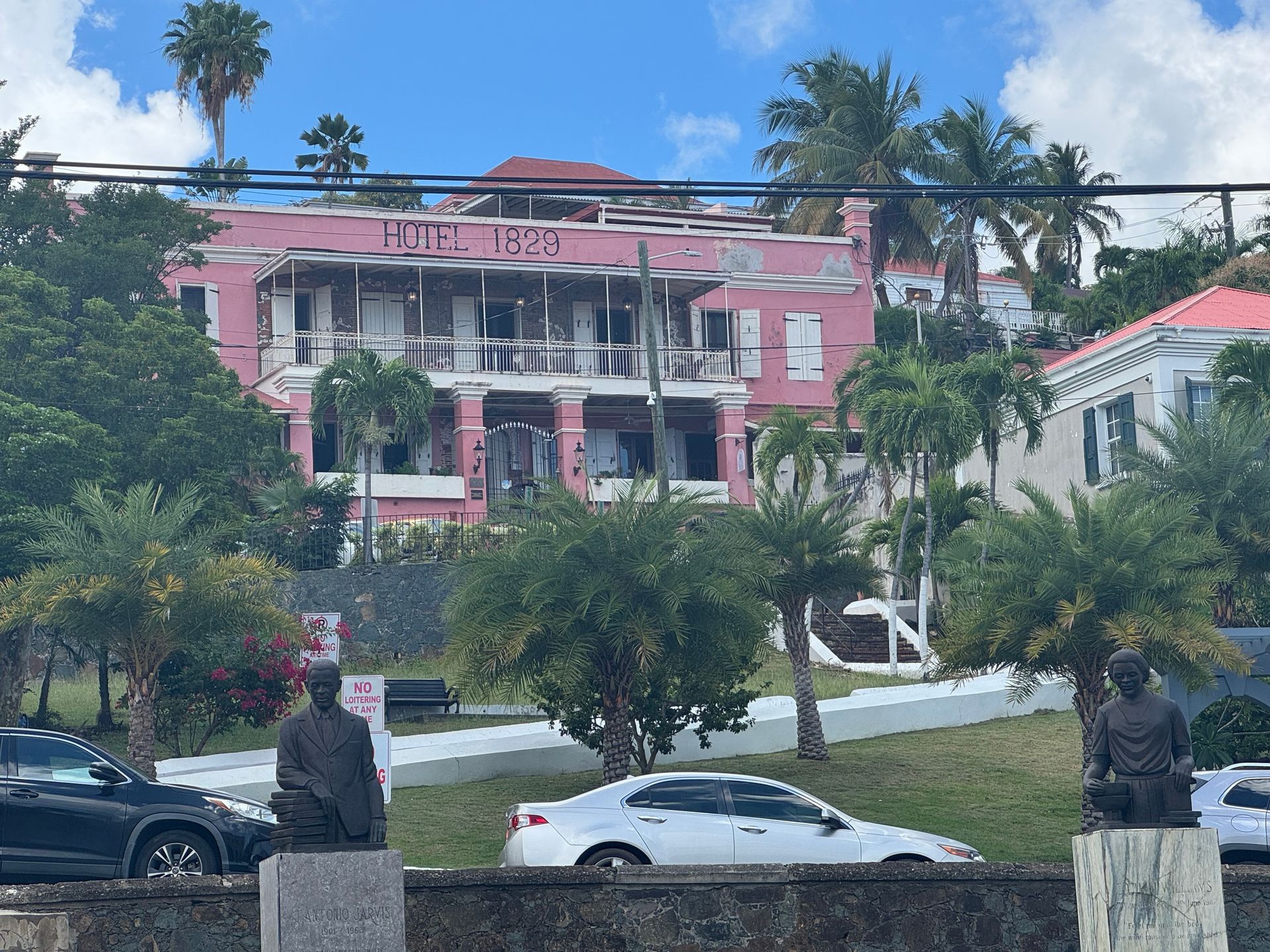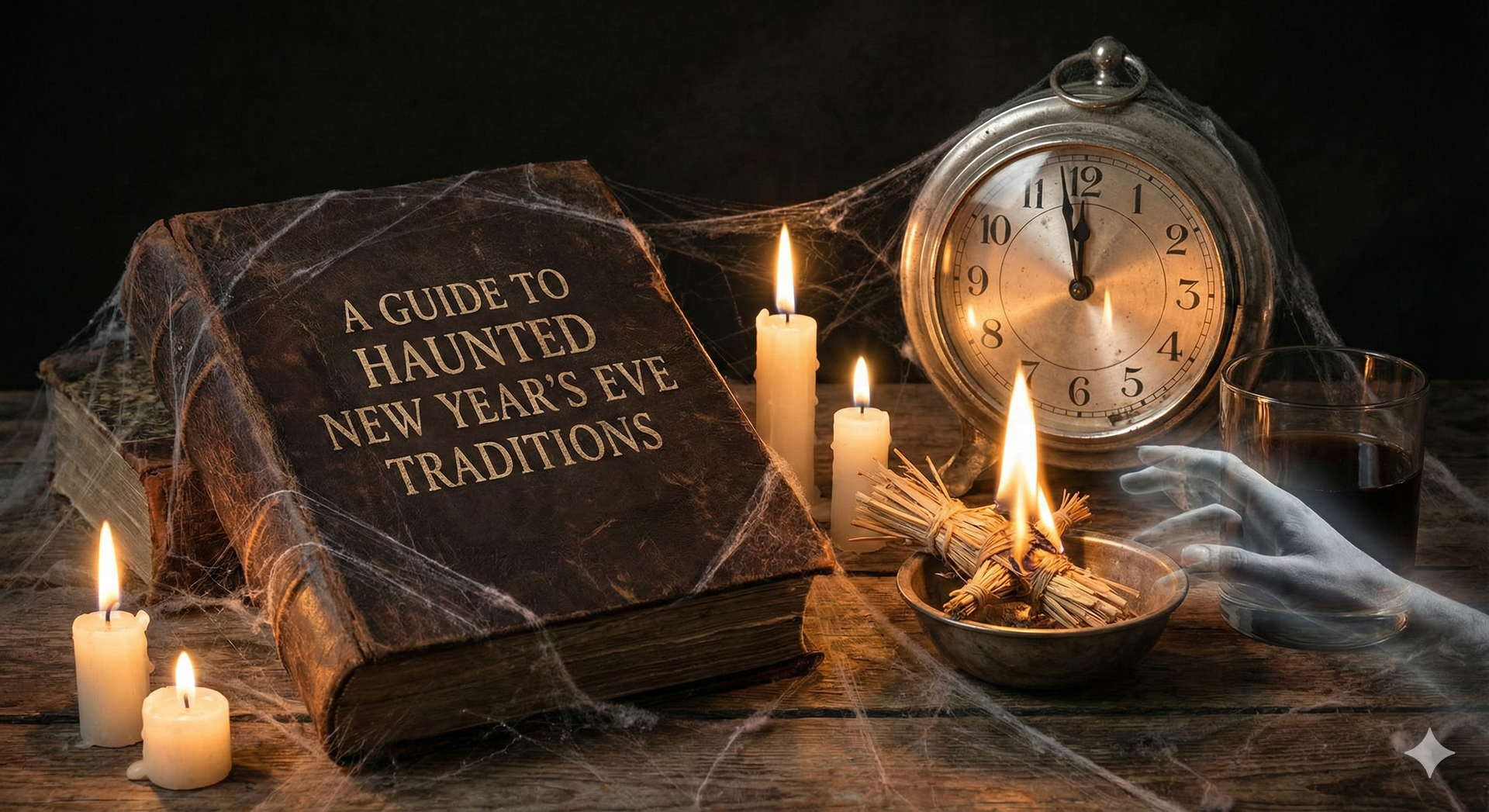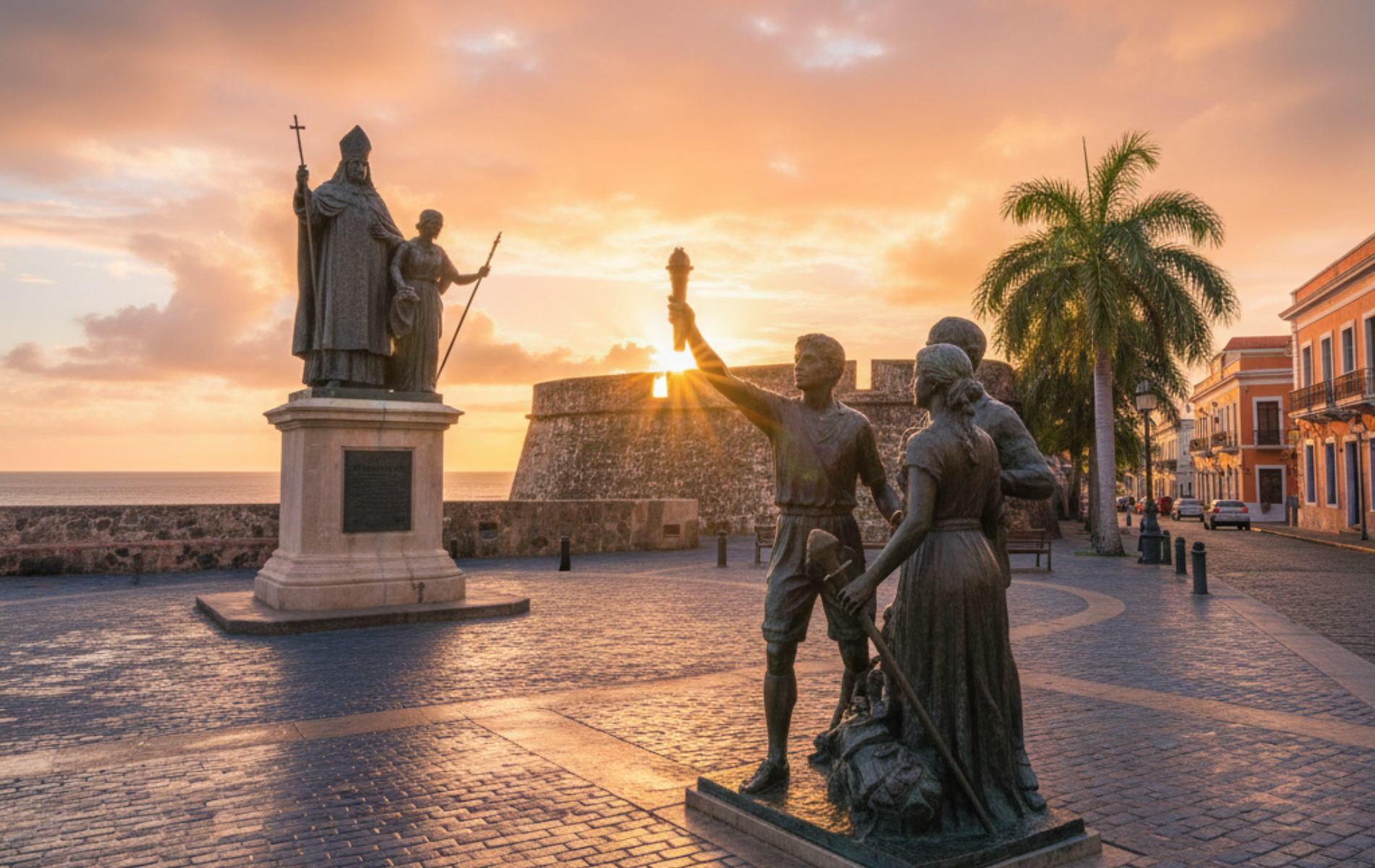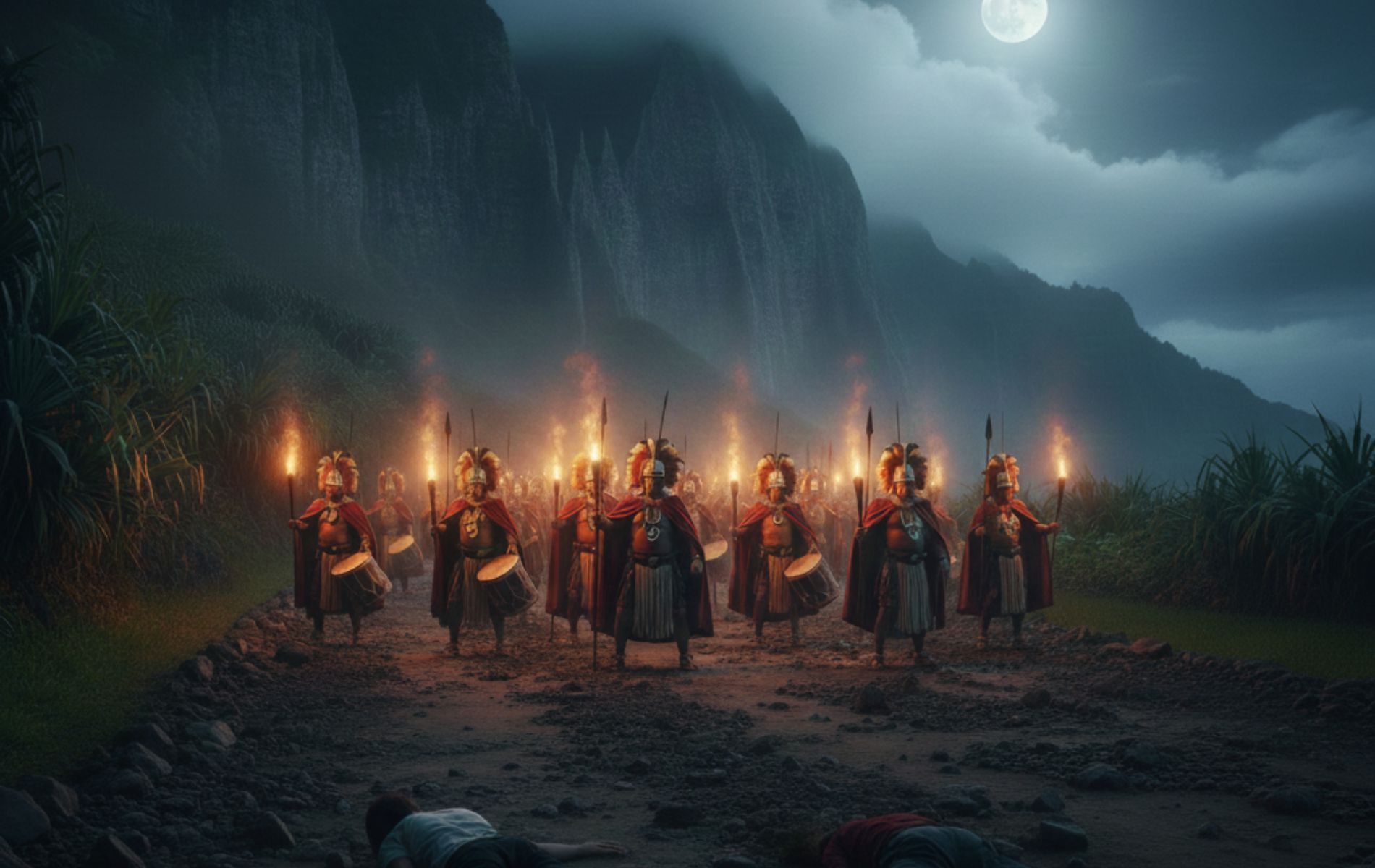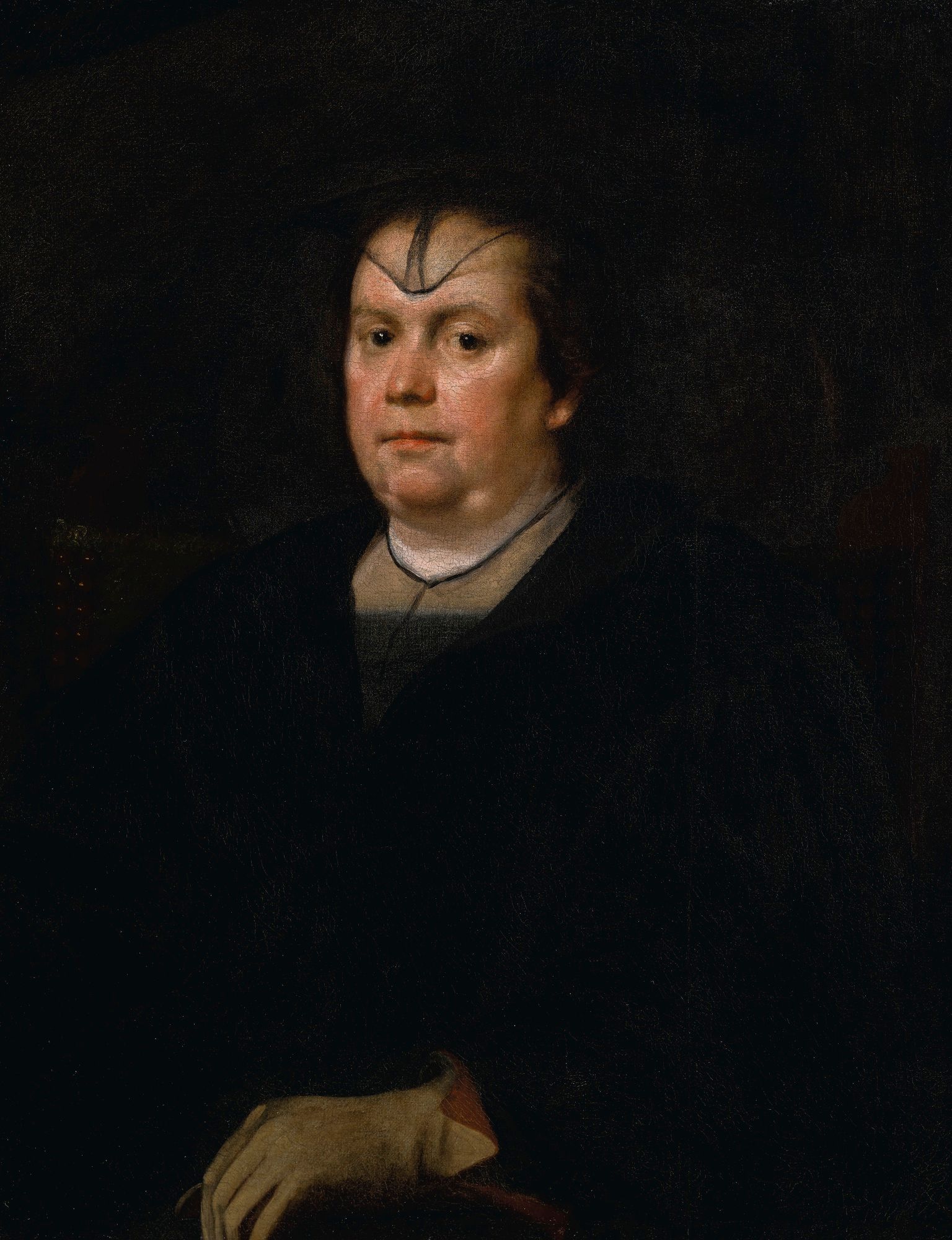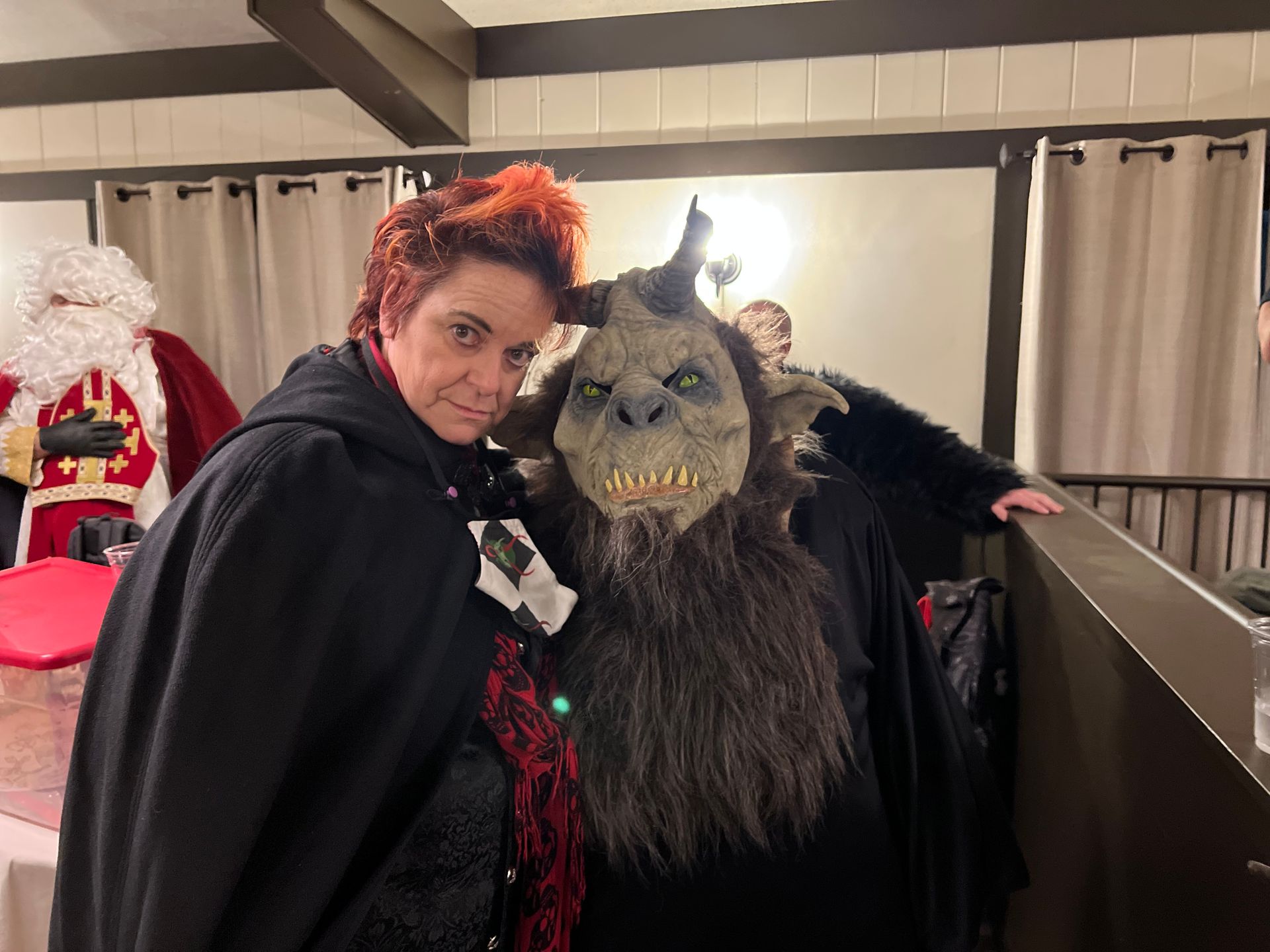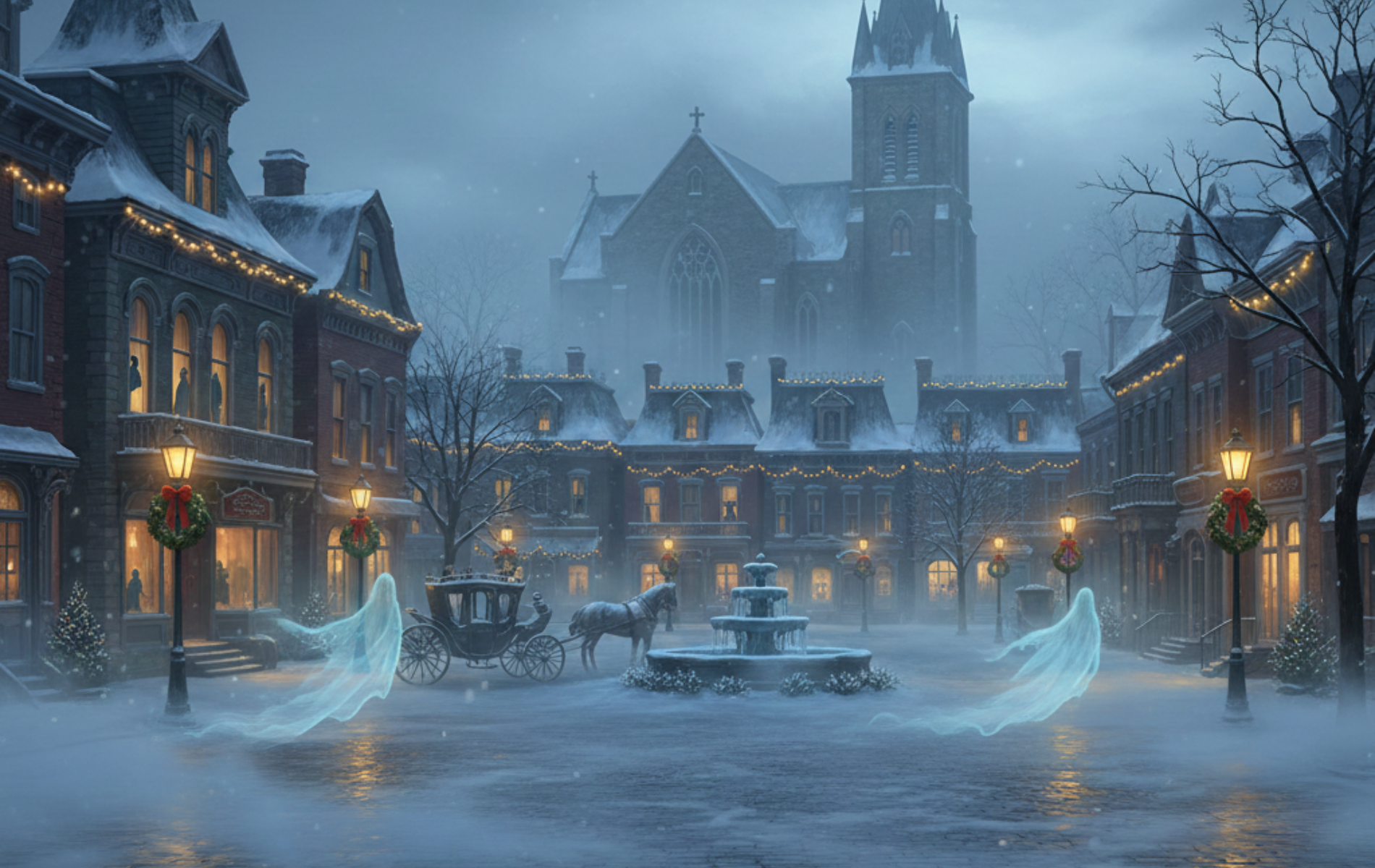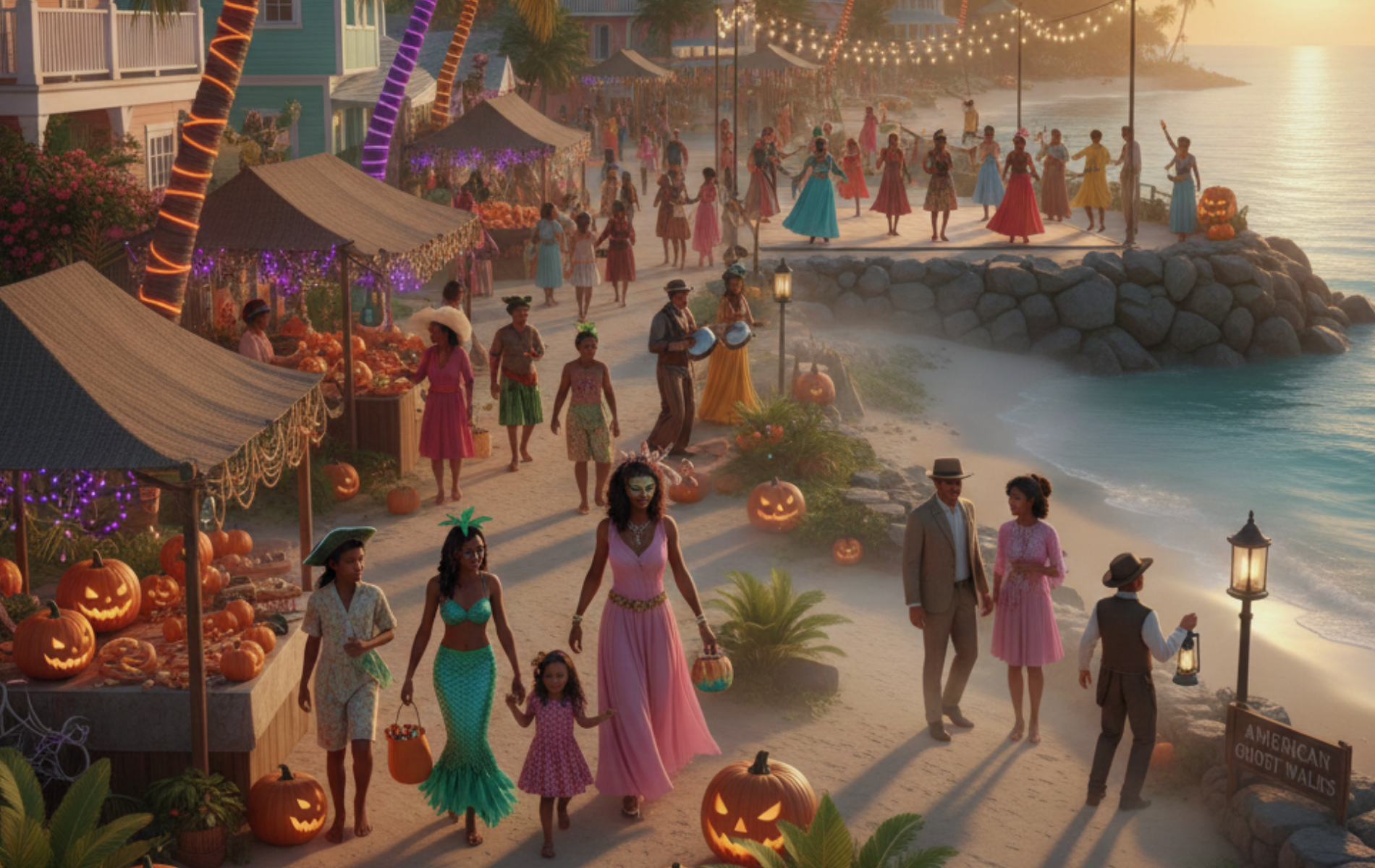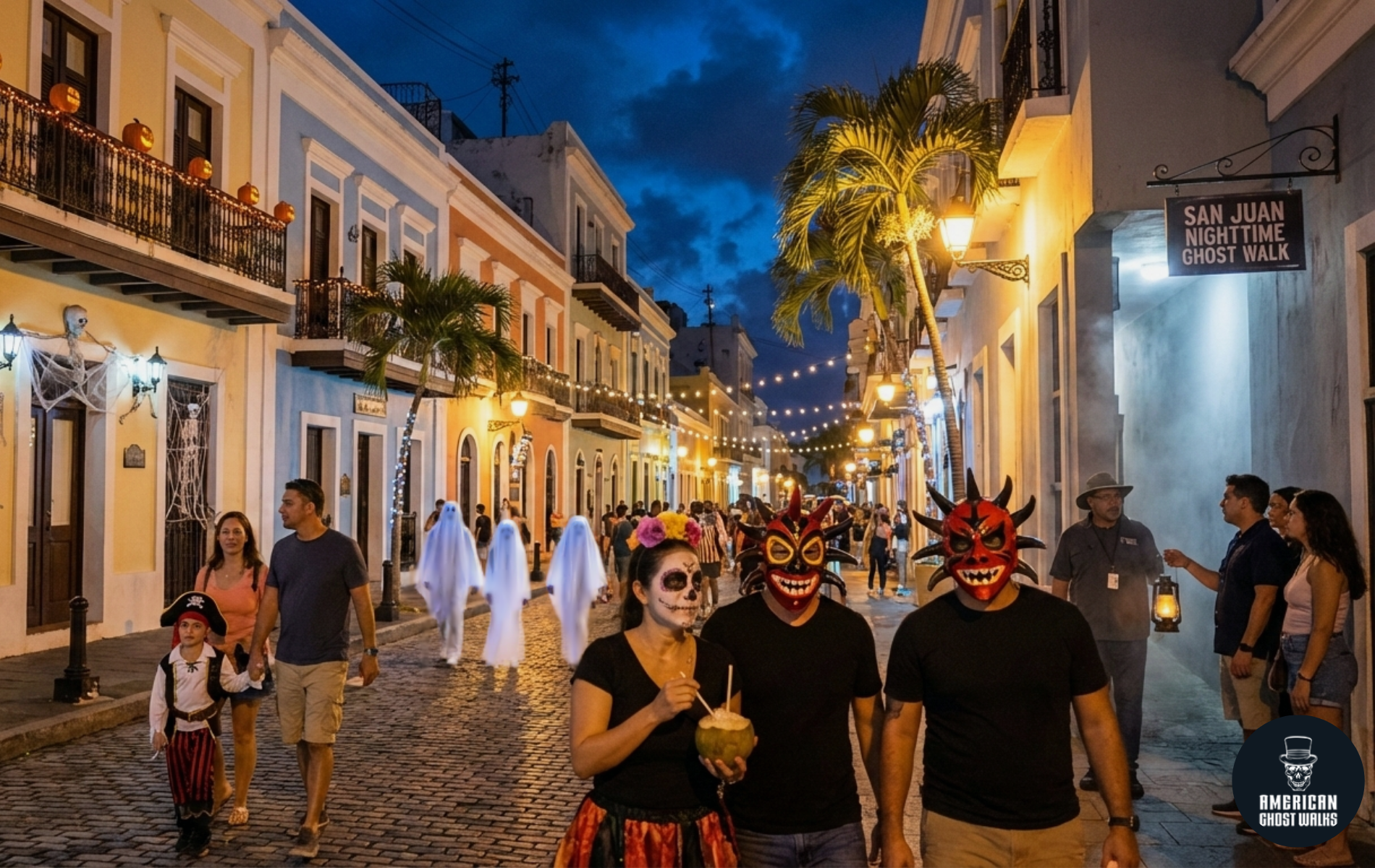The Moko Jumbie: Spirit Guardian of the Virgin Islands
If you’ve ever wandered the streets of the Virgin Islands during carnival season, you’ve seen them. Towering figures dancing above the crowd on impossibly long stilts, faces masked, robes flowing, and energy electric. Locals cheer. Children stare in awe. And visitors, if they know the history, pause with reverence. Because the Moko Jumbie is more than a performer.
The Moko Jumbie is a protector. A spirit. A living piece of Caribbean folklore.
While many associate them with celebration, these watchful figures also have a deeper role in the islands’ spiritual history. Long before they ever appeared in parades, the Moko Jumbies walked tall as guardians between worlds. These were divine beings who could see danger coming and defend communities from evil.
Like many legends in the Virgin Islands, their story begins with something older, darker, and sacred.
Where the Spirit Walks Tall
The word “Moko” comes from West Africa, where the spirit was seen as a healer and seer. The term “jumbie,” found across Caribbean culture, refers to a ghost or spirit. Sometimes mischievous, sometimes protective, but always powerful. When enslaved Africans were brought to the Caribbean, they carried these traditions with them. The Moko Jumbie became a hybrid figure: a towering ancestral spirit who could see far and keep watch over people and land.
In the Virgin Islands, this spirit took to the streets.
Walking on stilts was not just for show. The height symbolized vision, both physical and spiritual. The Moko Jumbie could see things others could not. It could spot evil before it arrived. It could lift a community's eyes toward resilience, resistance, and protection.
While today’s Moko Jumbies bring joy and energy to festivals, their roots remain grounded in spiritual defense. When one appears, you are not just witnessing a performance. You are standing in the presence of a cultural protector.
Not Just for Carnival
During the colorful chaos of the Virgin Islands Carnival or the Crucian Christmas Festival, the Moko Jumbie is a headliner. Dressed in vibrant costumes and expertly navigating their stilts, they sway, dance, and engage the crowd. They are loved. Admired. Photographed.
But their presence is more than symbolic flair.
In some communities, the Moko Jumbie is still honored as a spiritual figure. Offerings are made. Stories are passed down. Children are taught that these beings are not just fun. They are sacred. In times of trouble, people still speak of dreams where a Moko Jumbie appears, or moments when they felt protected without knowing why.
If you walk the streets of Charlotte Amalie or Frederiksted late at night, especially around Carnival time, you might hear someone say, “That was a jumbie watching over us.” They could be talking about a ghost. Or a Moko Jumbie. Or both.
Moko Jumbie vs. Ghost: What’s the Difference?
At American Ghost Walks, we explore the haunted layers of the Virgin Islands. Stories of lost souls, cursed lovers, and haunted forts are part of our nightly paths. But not all spirits here are tragic or terrifying. Some are revered.
Unlike the woman with the cloven hoof, who haunts the streets of Charlotte Amalie in silence and sorrow, the Moko Jumbie is not a ghost trapped in time. It is a spirit who chose to stay.
This spirit walks with purpose. Where a ghost might appear as a remnant of unresolved pain, the Moko Jumbie shows up as a sign of strength and spiritual continuity. It walks tall, literally and figuratively, reminding the living that not all supernatural presence is to be feared.
In fact, many locals believe Moko Jumbies keep other darker spirits at bay. A jumbie might lurk in the shadows, but a Moko Jumbie walks in the open. And it walks for you.
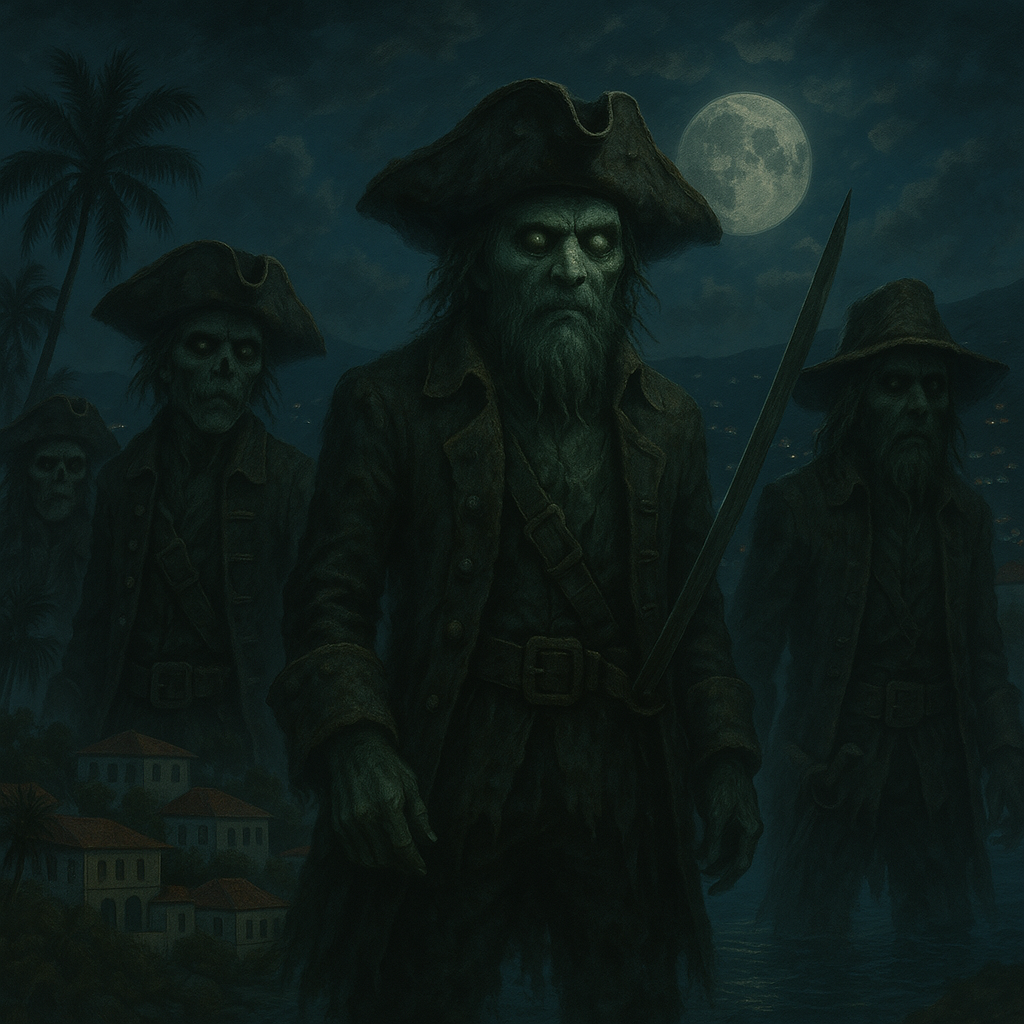
Modern Revival and Cultural Pride
here was a time when Moko Jumbie traditions were fading in the Virgin Islands. Colonial suppression and changing cultural tides nearly silenced the stilts. But in recent decades, there has been a powerful revival.
Thanks to community groups, cultural schools, and passionate performers, Moko Jumbie training is once again part of local heritage. Young people learn to stilt-walk not just as a skill, but as a connection to ancestors. Workshops in St. Thomas and St. Croix help pass on techniques and stories. Some Moko Jumbies even travel, sharing Virgin Islands folklore with the world.
This is more than tradition. It is resistance. To keep the Moko Jumbie alive is to affirm the value of African heritage, Caribbean identity, and spiritual pride.
What Is a Jumbie?
You might be wondering, what is a Jumbee? Or what is a jumbie? Simply put, it’s a Caribbean spirit or ghost. Depending on the island, the jumbie definition may vary—sometimes malicious, sometimes protective. The Jumbie meaning often depends on oral tradition, passed through stories and songs.
Language, Folklore & Expression
Caribbean culture is rich with imagery and emotion. Puerto rican idioms and puerto rican sayings, like many island expressions, reflect centuries of history, colonization, and resistance. And as we uncover the stories behind moko jumbie art, it’s clear these traditions are more than performances—they’re storytelling in motion.
What It Means to See One
If you ever spot a Moko Jumbie in the distance, perhaps on a street corner during festival season or dancing among the crowds at dusk, pause for a moment. Take it in. You’re not just seeing a tall figure in a costume. You are witnessing centuries of history, faith, and protection.
Some say seeing a Moko Jumbie before a journey is good luck. Others believe they appear when you need them most. There are stories of people who avoided car accidents, fell ill but recovered, or changed course in life after a chance encounter.
Whether or not you believe in the spiritual side, one thing is certain. The Moko Jumbie is a symbol of strength. It reminds us that the past is not forgotten. That the ancestors are still watching. That even in a world of ghosts and shadows, there are spirits who rise above it all.
Why We Include the Moko Jumbie in Our Stories
At American Ghost Walks, our tours in the Virgin Islands highlight tales of haunted forts, cursed love, and chilling whispers on the wind. But we also share the stories that empower.
That’s why we talk about the Moko Jumbie.
Not every spirit needs to be feared. Some deserve to be celebrated. And while the Moko Jumbie may not glide through our tours like the cow-foot woman or the jumbies of the backstreets, its presence is part of the landscape. It is part of what makes the Virgin Islands a place where folklore is alive and spirits are real.
Whether you are exploring Charlotte Amalie with us or simply reading this from afar, remember: someone tall may be walking with you. Someone who sees more than you do. Someone who protects.
Learn More on the Charlotte Amalie Ghost Walk
Want to hear more about the ghosts and spirits that roam the Virgin Islands? Join us on the Charlotte Amalie Ghost Walk, where history, hauntings, and folklore intertwine on every corner. From Fort Christian to the old stone alleys, you’ll uncover the eerie side of paradise and maybe even feel a spirit or two watching from above.

